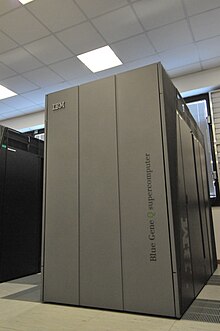 | |
| Formation | July 1967 |
|---|---|
| Type | governmental organisation |
| Purpose | supercomputing centre for scientific research |
| Headquarters | Casalecchio di Reno, Bologna, Italy, EU |
| Location | |
| Fields | grid computing, bioinformatic, digital content |
Official language | English, Italian |
| Staff | 1,030 |
| Website | www |


Cineca is a non-profit consortium, made up of 69 Italian universities, 27 national public research centres, the Italian Ministry of Universities and Research (MUR) and the Italian Ministry of Education (MI), and was established in 1969 in Casalecchio di Reno, Bologna.
It is the most powerful supercomputing centre for scientific research in Italy,[1] as stated in the TOP500 list of the most powerful supercomputers in the world: Marconi100, is ranked at the 18th position of the list as of November 2021, with about 30 P/FLOPS.
The consortium's institutional mission is to support the Italian scientific community through supercomputing and scientific visualisation tools. Since the end of the 1980s, Cineca has broadened the scope of its mission by embracing other IT sectors, developing management and administrative services for universities and designing ICT systems for the exchange of information between the MIUR and the Italian national academic system. The consortium is also strongly committed to transfer technology to many categories of users, from public administration to the private enterprises.
Today it merges the specificities and competences of the other two Italian high performance computing consortia, CILEA and Caspur: as a unique reference point for technology innovation in Italy, with its services Cineca supports the whole higher education and research system.
Cineca takes part in several research projects funded by the European Union for the promotion and development of IT technologies (grid computing, bioinformatic, digital content, the promotion of transnational access to European supercomputing centres, etc.).
- ^ TOP500 List – November 2021, retrieved 15 December 2021